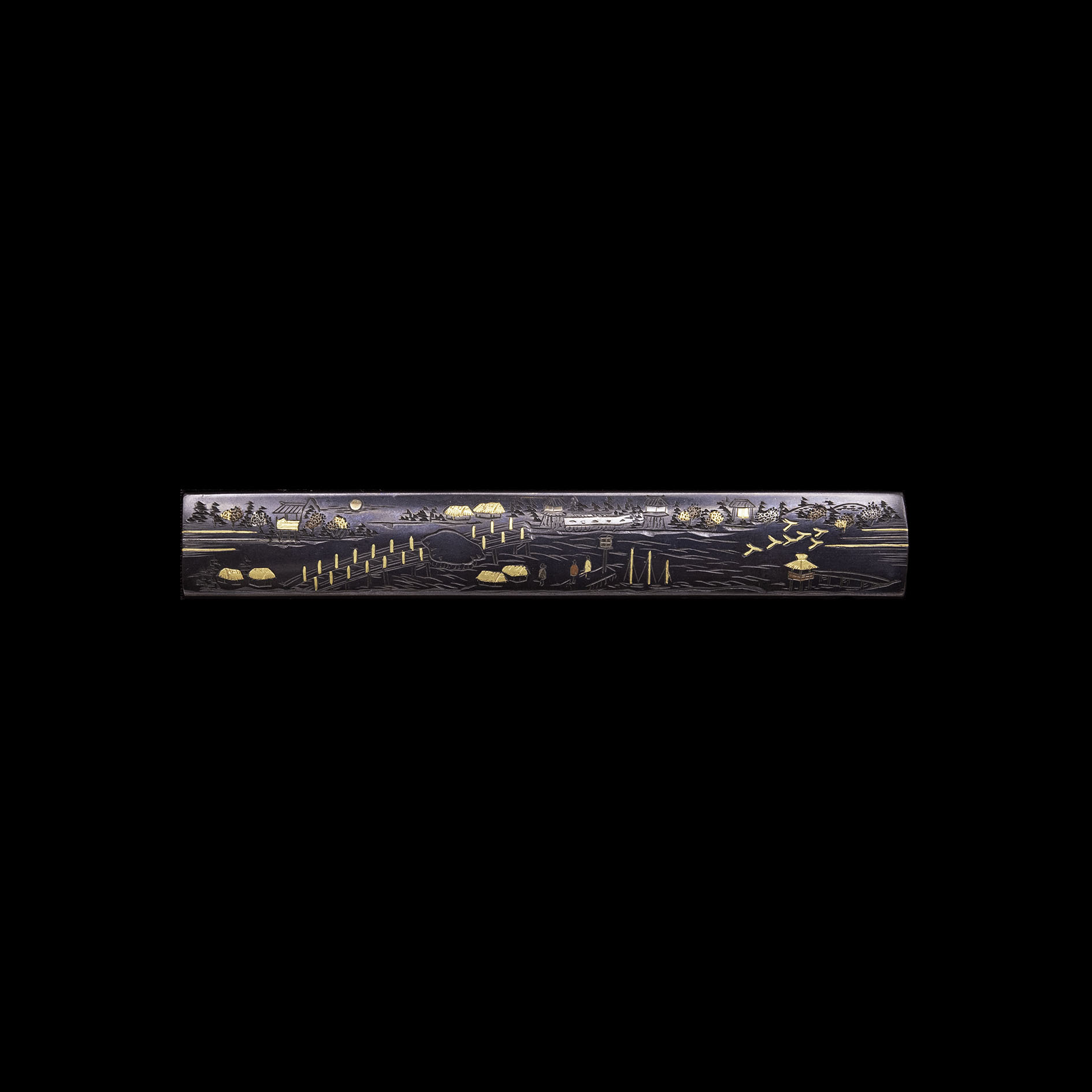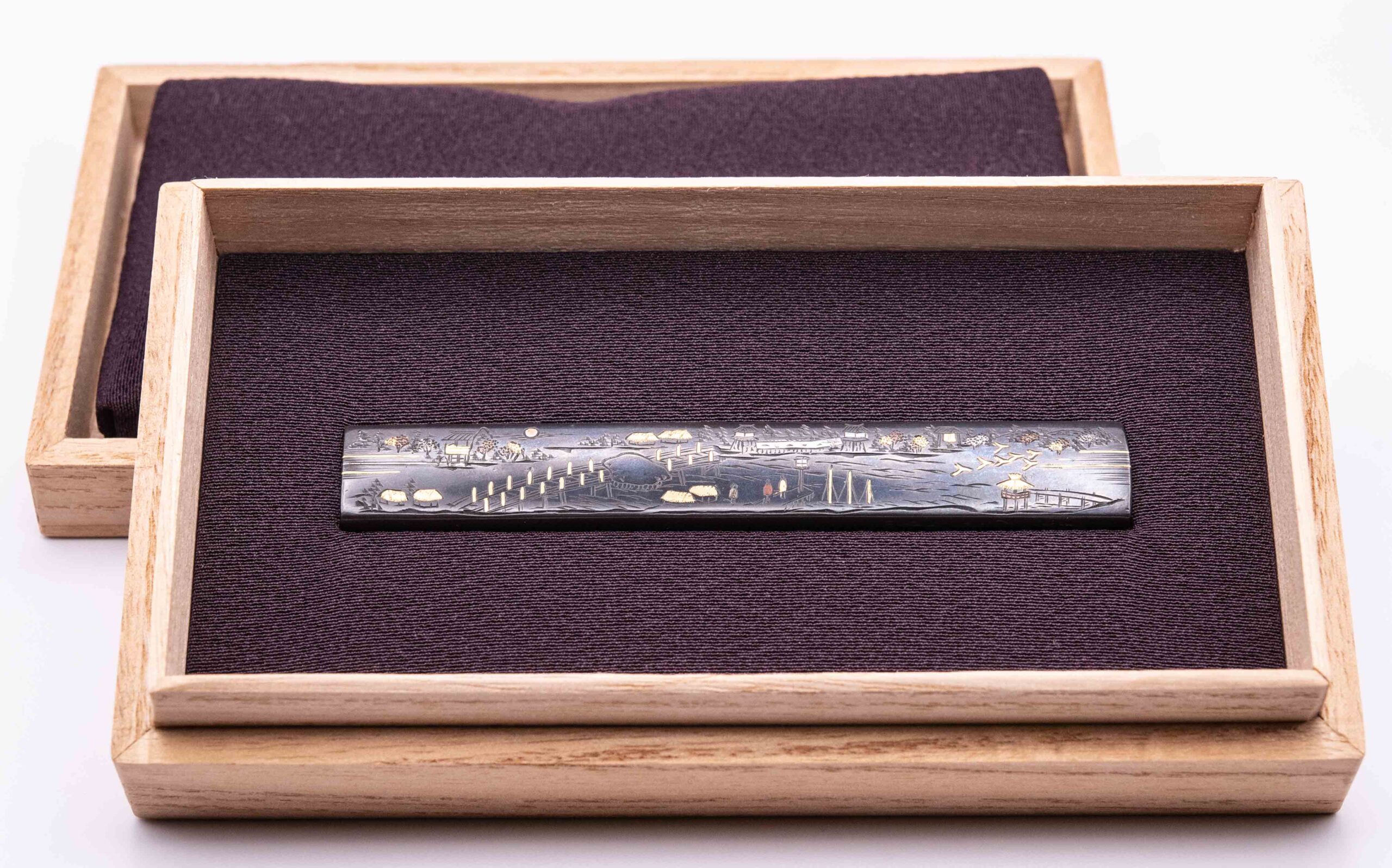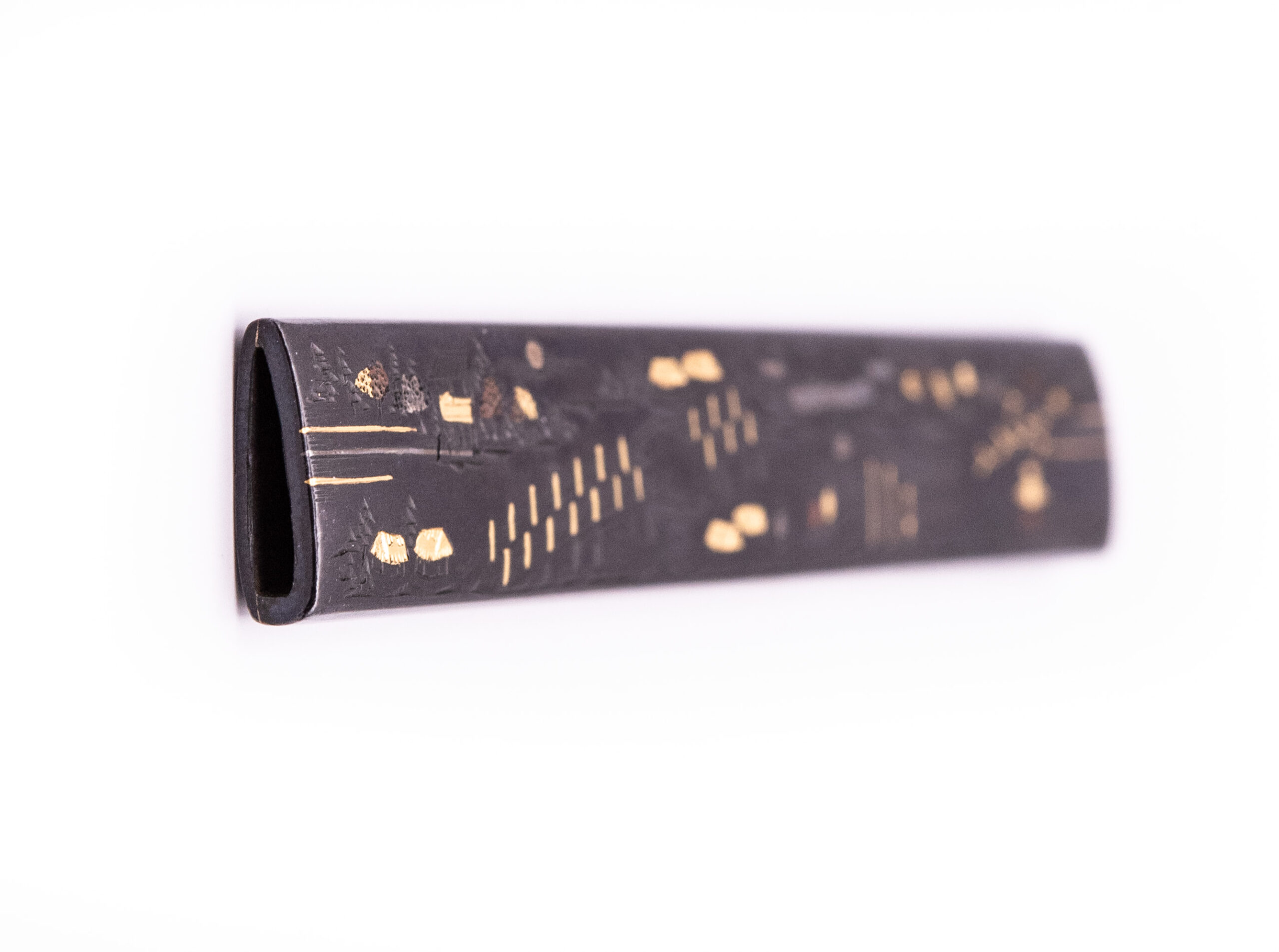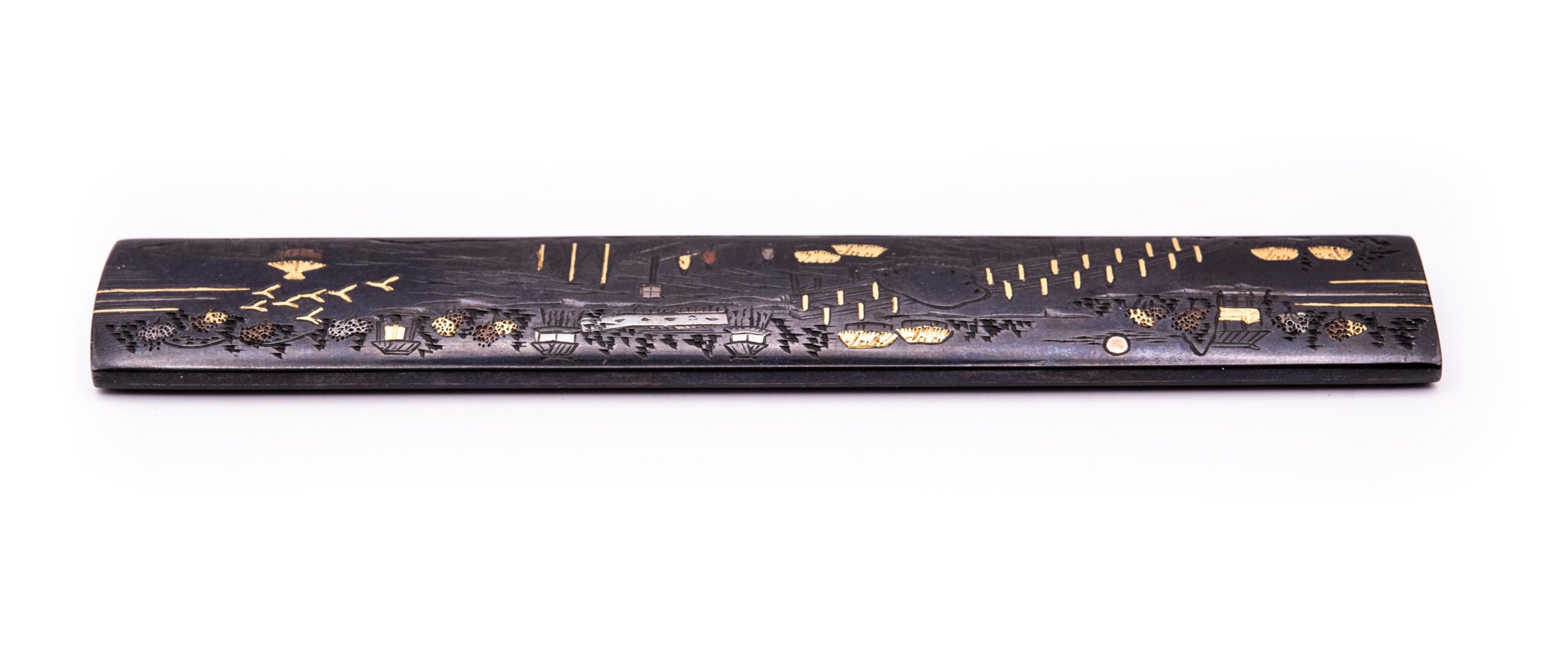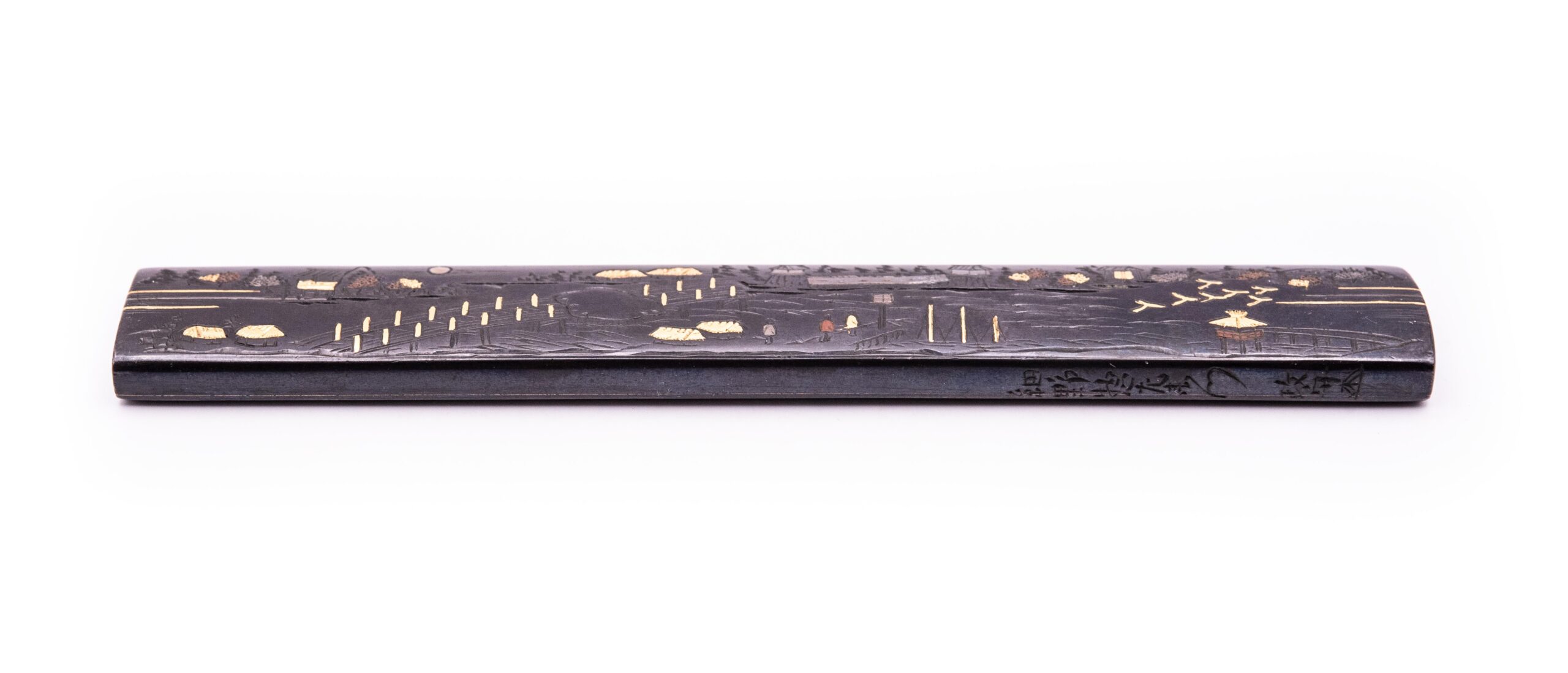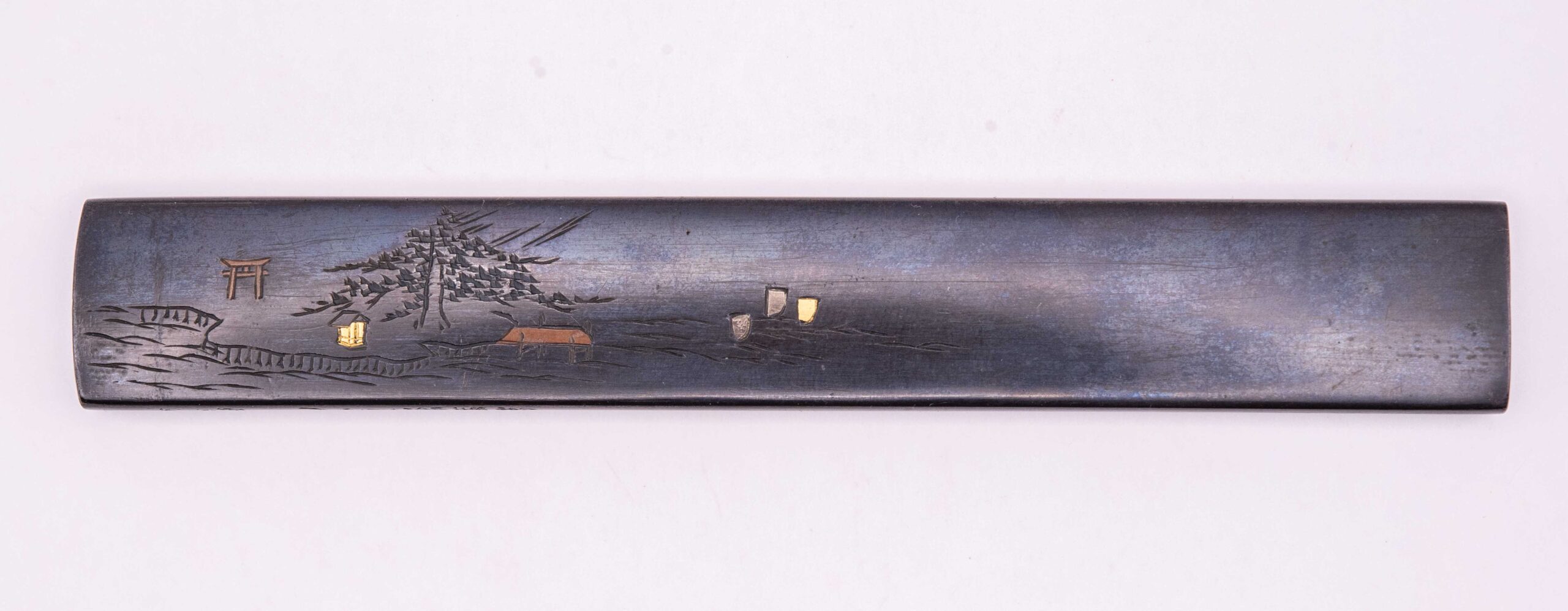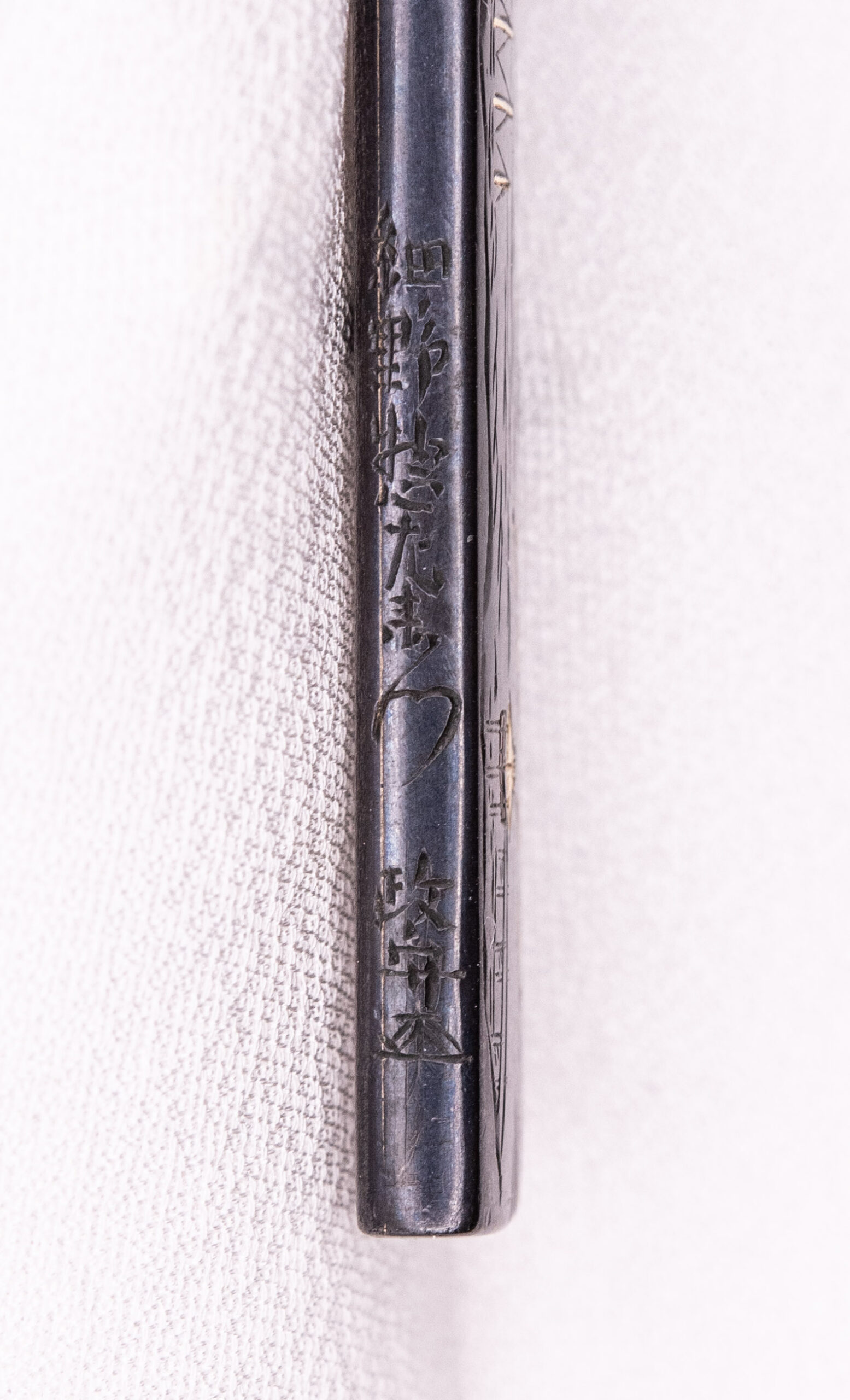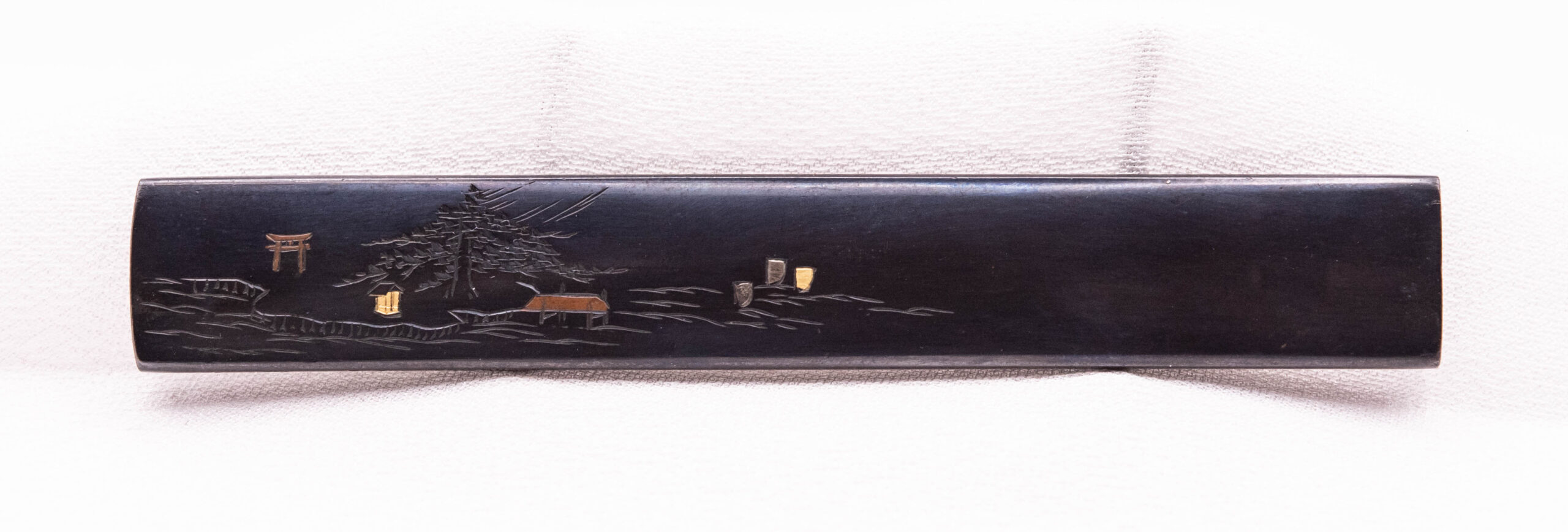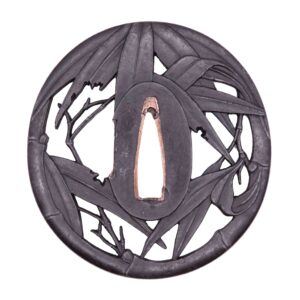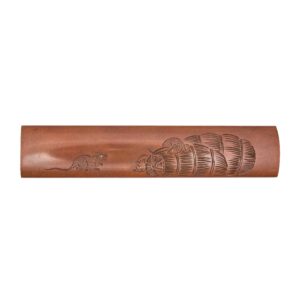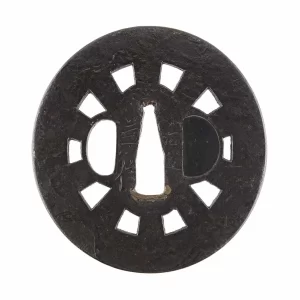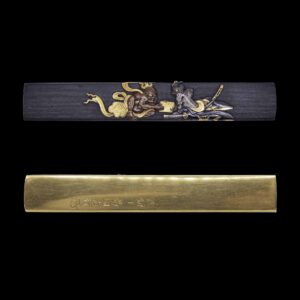Hosono Sozaemon Masamori (細野惣左衛門政守) worked in Kyoto in the early Edo period between Genroku and Kyoho (1688 – 1736) . He used Kebori and Katakiribori mixed with Hira Zogan and often filled the whole plate with his motives of landscapes and rural life. For his time he was quite progressive as he not only depicted sceneries which had been famous from history or favoured by the noble class but chose to show the life of the working class people. Thus we often see workers or farmers going after their daily job in his work.
This Kozuka depicts the eight views of Omi province (today’s Shiga Prefecture) also called the eight views of Biwa lake as all the views concentrate around the southern side of the Biwa lake. The theme was derived from the Chinese ‘Eight Views of Xiaoxiang’ (11th century) and came to Japan in the 14th century when it was used in poetry by Konoe Masaie a prince of Hikone. Later it became a subject for artists like Suzuki Harunobe or Utagawa Hiroshige.
The eight views are:
- Returning sails at Yabase (Yabase no kihan 矢橋帰帆), an old harbor on the east side of the lake. Near the Tōkaidō, it was used as a shortcut to Ōtsu by boat. In the early Meiji era steamers appeared, until the railway began its service.
- Evening glow at Seta (Seta no sekishō 瀬田夕照) – The Chinese Bridge at Seta. The long bridge across the Seta River was used by the Tōkaidō. Today there is only a concrete construction.
- Autumn moon at Ishiyama Temple (Ishiyama no shūgetsu 石山秋月). The Ishiyama-dera was located on a hillside next to the Seta River. It got his name from the strange rocks on which it is built, partly on supporting beams. A hut at the upper end of the site allows a view of the lake and of the moon
- Clear breeze at Awazu (Awazu no seiran 粟津晴嵐). Awazu is well known for its pine wood, Awazu-ga-hara. In some pictures the Zeze Castle can be seen. It was dismantled in the Meiji era.
- Evening bell at Miidera (Mii no banshō 三井晩鐘) – Mii-dera. Miidera temple was built in the 8th century. Its bell is one of the “Three bells of Japan”, the other two being those at Byōdō-in, Uji and at Jingo-ji, Kyoto.
- Evening rain at Karasaki Shrine (Karasaki no yau 唐崎夜雨). Karasaki is a small cape with a single large pine tree, a hitsu-matsu. The pine has been replaced several times since Hiroshige’s era.
- Wild geese returning home at Katata (Katata no rakugan 堅田落雁) at Ukimido temple. Ukimido is a little temple near Katata in the square hōkyō-style, detached from the lakeside, connected by a bridge. The first part of the name uki is the same as in Ukiyo-e, meaning floating. Midō means temple.
- Evening snow at Hira (Hira no bosetsu 比良暮雪). The Hira Mountains on the west side of the lake often experience a harsh winter, when the winter monsoon brings much snow from the continent.
We can see all the eight views beautifully arranged in this Kozuka and also perfectly executed. The gold inlays are fully intact and shining brightly. Other accents are made in silver and copper inlays. Most works of Masamori are made in Shibuichi but this Kozuka is in a very dark shiny Shakudo which is much rarer. On the side is a delicately executed signature reading ‘Hosono Sozaemon Masamori (Kao)’.
This Kozuka is attributed to Hosono Sozaemon Masamori by the NBTHK Hozon Kanteisho.
Comes in a high quality custom made box.
97 mm x 14.5 mm x 4.5 mm

